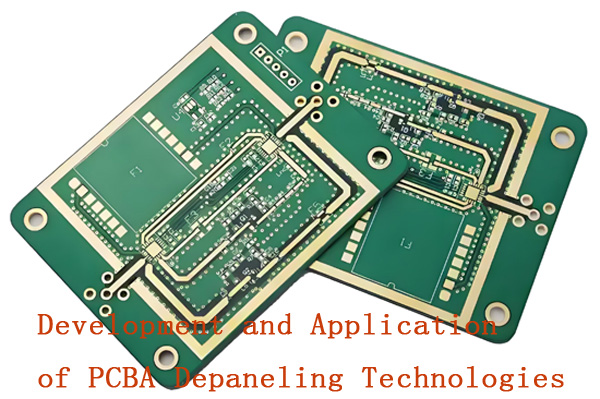Cleaning PCB boards is something many people in the electronics industry have to deal with. It might seem like a small task, but if not done properly, it can seriously affect the quality and performance of the boards. In this article, we’ve put together some common issues related to PCB cleaning. Let’s take a look together!
- Part 1. What is the best way to clean a PCB board?
- Part 2. Can you clean a PCB with isopropyl alcohol?
- Part 3. How do you remove flux residue from a PCB?
- Part 4. Is it safe to wash a PCB with water?
- Part 5. How do you clean a PCB after soldering?
- Part 6. What tools are needed to clean circuit boards?
- Part 7. Can ultrasonic cleaners be used for PCB cleaning?
- Part 8. How do you clean corrosion from a PCB?
- Part 9. What causes a PCB to get dirty or oxidized?
- Part 10. Can you use a toothbrush to clean a circuit board?
- Part 11. FAQs about PCB cleaning
Part 1. What is the best way to clean a PCB board?
The best method is to use isopropyl alcohol (IPA, 90% or higher) and a soft brush to gently remove dirt, flux, and residue. After scrubbing, rinse with clean IPA and allow the board to air-dry or use compressed air. For precision or delicate boards, an ultrasonic cleaner may be used, but only with compatible cleaning solutions and care.
Part 2. Can you clean a PCB with isopropyl alcohol?
Yes, isopropyl alcohol is one of the safest and most effective solvents for cleaning PCBs. It evaporates quickly, leaves no residue, and is safe for most components and solder joints. Use 90% or higher purity for best results.
Part 3. How do you remove flux residue from a PCB?
To remove flux residue, apply isopropyl alcohol to the affected areas and gently scrub with a soft anti-static brush. Repeat if needed, and use a lint-free cloth or compressed air to remove excess alcohol and debris.
Part 4. Is it safe to wash a PCB with water?
Washing a PCB with distilled water can be done in specific cases (like post-solder cleaning), but it must be completely dried afterward to avoid corrosion or shorts. Avoid tap water, and always follow up with IPA and proper drying.

Part 5. How do you clean a PCB after soldering?
After soldering, clean the PCB using isopropyl alcohol to remove flux residues. Use a soft brush to scrub, then wipe or blow away the residue. For mass production, automated cleaning machines may be used with specialized solvents.
Part 6. What tools are needed to clean circuit boards?
Common tools include isopropyl alcohol, anti-static or soft-bristle brushes, lint-free wipes, tweezers, compressed air, and optionally an ultrasonic cleaner. Avoid metal brushes or anything that could damage traces or components.
Part 7. Can ultrasonic cleaners be used for PCB cleaning?
Yes, ultrasonic cleaners can be very effective for PCBs, especially for removing dirt or flux from tight spaces. Use electronics-safe cleaning solutions and make sure all components are sealed and the board is thoroughly dried afterward.
Part 8. How do you clean corrosion from a PCB?
Light corrosion can be cleaned using isopropyl alcohol and a brush. For more severe cases, use a mix of baking soda and water, gently scrub the area, rinse, and dry thoroughly. Always inspect for damaged traces or pads afterward.
Part 9. What causes a PCB to get dirty or oxidized?
Common causes include exposure to moisture, humidity, airborne dust, flux residues, environmental pollutants, or chemical spills. Poor storage and lack of protective coatings can also accelerate oxidation and corrosion.
Part 10. Can you use a toothbrush to clean a circuit board?
Yes, a soft-bristle toothbrush can be used, but anti-static brushes are preferred to avoid static damage. Make sure the brush is clean, and use it with IPA or another safe cleaning agent. Be gentle to avoid damaging components or traces.
Part 11. FAQs about PCB cleaning
How do you dry a PCB after cleaning?
Use compressed air or let it air-dry in a dust-free environment. Ensure it’s fully dry before powering on to prevent short circuits or damage.
What’s the difference between no-clean and rosin flux residues?
No-clean flux leaves minimal residue that’s usually non-conductive, while rosin flux leaves sticky residue that should be cleaned off to avoid signal interference or corrosion.
How do you clean a PCB with vinegar or baking soda?
Use diluted vinegar to dissolve corrosion, then rinse with distilled water. Baking soda can neutralize acid, but both must be rinsed thoroughly and dried to avoid residue.
Can cleaning damage PCB components?
Yes, using the wrong chemicals, too much force, or static-prone tools can damage components or lift traces. Always use ESD-safe tools and approved solvents.
What chemicals should be avoided when cleaning PCBs?
Avoid strong acids, acetone, ammonia, and chlorinated solvents. They can damage solder masks, dissolve plastics, or corrode metal parts.
How often should PCBs be cleaned in maintenance?
Cleaning frequency depends on the environment. In dusty or corrosive settings, inspect and clean every 3–6 months. In clean conditions, yearly cleaning may suffice.
How do you clean PCBs in industrial production?
Factories use batch or inline cleaning systems with deionized water or special solvents, followed by drying chambers for fast, consistent cleaning.
Is contact cleaner safe for PCB cleaning?
Yes, if it’s labeled safe for electronics. Use non-conductive, residue-free types. Avoid overuse and ensure it evaporates completely before powering up.
What’s the best method to clean a burned PCB area?
Gently scrape charred material, clean with isopropyl alcohol, and inspect for damage. Severely burned areas may require rework or board replacement.
Are there eco-friendly PCB cleaning methods?
Yes, water-based and biodegradable cleaners are available. Some use ultrasonic or vapor-phase systems with recyclable or low-toxicity solvents.
A professional with over a decade of experience in the PCB depaneling industry.


